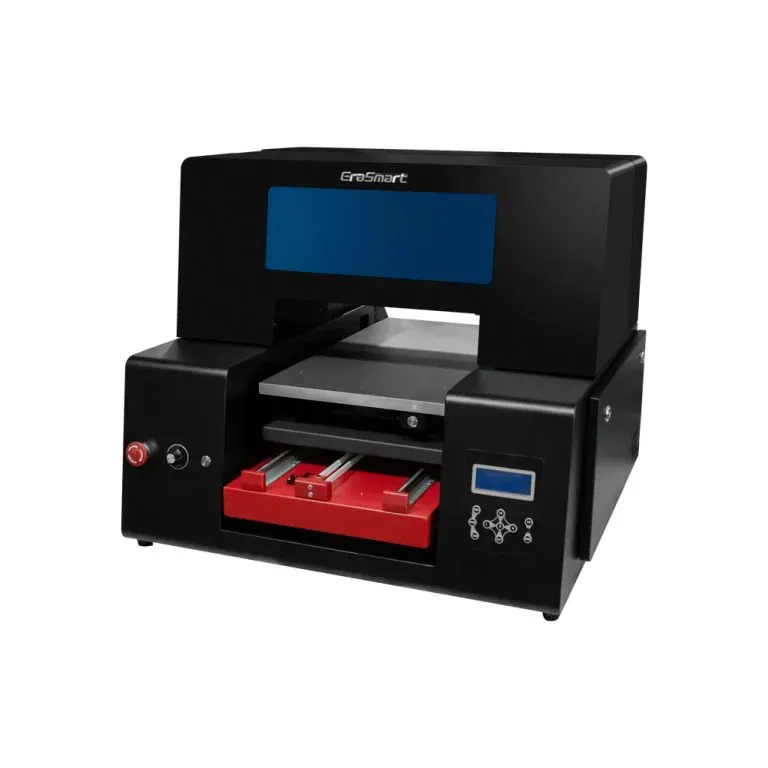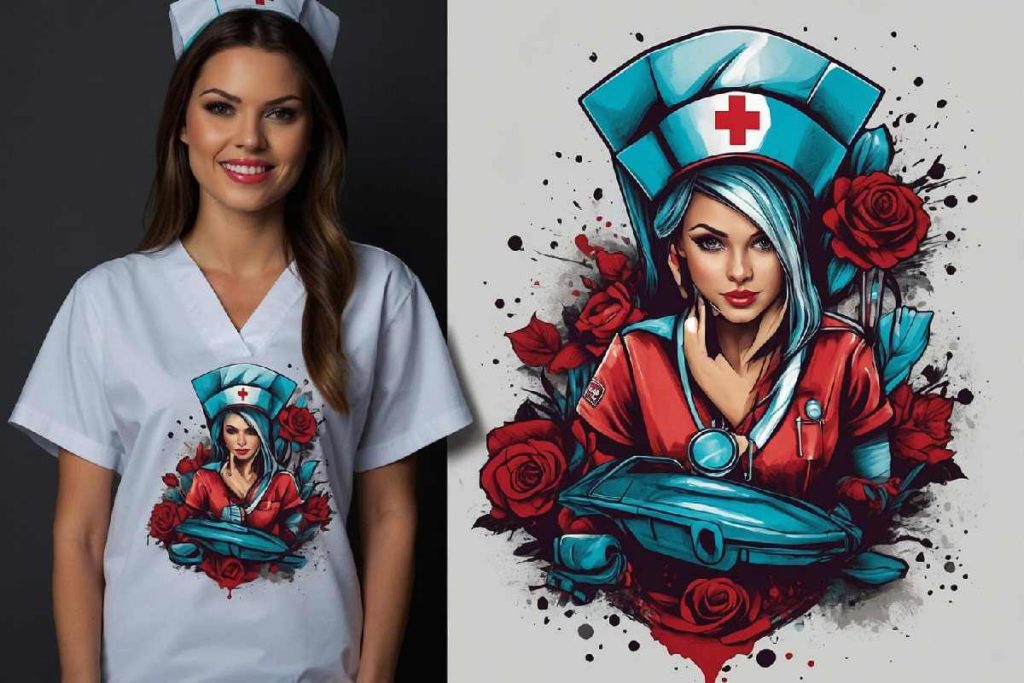UV DTF Technology, or Direct to Film printing, is emerging as a transformative force in the realms of fashion and decor. As industries strive for sustainable printing methods that do not compromise on creativity, UV DTF offers an ideal solution by combining innovation with environmental responsibility. This cutting-edge technique enables custom fashion printing directly onto various surfaces, allowing for vibrant designs and intricate details that were previously unattainable. With its unique capabilities, UV printing stands at the forefront of contemporary trends in both fashion and home decor, responding to consumer demands for personalization. In this article, we delve into the revolutionary implications of UV DTF technology, examining its applications in decor and the fashion industry while highlighting its eco-friendly benefits.
Direct to Film (DTF) printing using UV technology represents a breakthrough in customizable printing, catering effectively to the fashion and decorative industries. Known for its innovative printing techniques, this method aligns with the growing trend of personalized creation, giving artists and brands the ability to manifest their distinct styles across a variety of materials. In a world increasingly attuned to sustainable practices, the eco-friendly attributes of DTF printing ensure that both designers and consumers can engage with their creative endeavors responsibly. As the landscape of custom fashion and decor evolves, this printing technology paves the way for unparalleled creativity and environmental stewardship, embodying a future where design knows no bounds.
The Benefits of UV DTF Technology in Custom Fashion Printing
UV DTF technology brings a fresh and dynamic approach to custom fashion printing, allowing designers to tap into previously uncharted territories of personalization and creativity. With its ability to print on various fabrics, including cotton, polyester, and blends, brands can now create unique apparel that resonates with individual customer preferences. This technology empowers fashion businesses to push the envelope, enabling them to deliver vibrant, high-resolution designs that stand out in a saturated market. By offering custom prints that reflect personal styles, businesses can significantly enhance customer loyalty and engagement.
Additionally, the flexibility of UV DTF technology means that businesses can respond rapidly to fashion trends and consumer demands. The ability to produce small runs of custom-designed clothing minimizes waste and supports sustainable practices in an industry often criticized for overproduction. Designers can test new concepts without incurring heavy costs associated with traditional manufacturing processes, thus fostering an environment of innovation. This adaptability not only attracts trendsetters but also positions brands as leaders in the shift towards sustainable fashion.
Sustainable Printing Methods: The UV DTF Approach
Sustainability is becoming a cornerstone of modern printing methods, and UV DTF technology stands at the forefront of this movement. This innovative process utilizes eco-friendly inks and materials, significantly reducing the environmental footprint typically associated with traditional printing methods. By adopting water-based inks, UV DTF printing minimizes harmful emissions and offers vibrant colors that don’t compromise on quality. As consumers become more eco-conscious, brands leveraging green printing technologies gain a competitive edge, appealing to a market increasingly focused on ethical consumption.
Furthermore, the long-lasting nature of UV DTF printed products ensures that items remain aesthetically pleasing and durable throughout their lifecycle. This durability translates to less frequent replacements, thereby reducing waste and contributing to a circular economy. By promoting the advantages of sustainable printing methods, brands not only enhance their credibility but also help shape consumer habits towards more responsible purchasing decisions. The integration of UV DTF technology thus reflects a broader commitment to sustainability that resonates with a growing demographic of environmentally-aware customers.
Integrated Design Solutions with UV DTF Technology
The integration of UV DTF technology with advanced design software presents an exciting frontier for artists and designers alike. This synergy allows for greater creativity, enabling the conversion of digital designs into stunning printed materials efficiently. Designers can play with various graphics, textures, and patterns, pushing the boundaries of traditional design processes. This flexibility fosters rapid prototyping, thereby allowing fashion brands to experiment with style variations and ensure offerings are in line with dynamic consumer preferences.
Moreover, the ease of modification in the design phase means that brands can tailor their outputs to specific demographics, enhancing market penetration. For example, a brand focusing on youth fashion can quickly adapt existing designs to align with current trends, maintaining relevance in an ever-changing market landscape. The speed and efficiency of this integrated approach create opportunities for brands to remain competitive while also encouraging constant innovation. This responsiveness is vital in both the fashion and home decor industries, where consumer tastes can shift rapidly.
UV DTF Technology in Home Decor: A New Trend
The application of UV DTF technology in home decor is redefining how personalized living spaces are transformed. From custom-printed cushions to tailored wall art, the technology enhances the ability to create unique pieces that reflect individual styles. Homeowners can now commission unique designs that cater to their aesthetic preferences, resulting in spaces that feel truly personal. This trend highlights a growing consumer demand for bespoke home decor solutions and allows businesses to capitalize on the shift towards individuality in interior design.
Furthermore, UV DTF’s versatility means that businesses can seamlessly print on various surfaces, including textiles, wood, and metal. This adaptability not only broadens the product offering but also ensures consistency in quality across different materials. The capability to produce detailed, high-quality prints facilitates creative expression in home environments, empowering customers to merge functionality and art. As more consumers seek to curate unique home aesthetics, UV DTF technology becomes an indispensable tool in the arsenal of decor businesses striving to meet these evolving preferences.
Revolutionizing Brand Marketing with UV DTF
Integrating UV DTF technology into brand marketing strategies is proving to be a catalyst for innovation. Brands are increasingly utilizing this technology to create captivating promotional materials that engage consumers and enhance brand recognition. Custom fashion items featuring UV DTF prints can serve as powerful marketing tools, allowing companies to showcase their creativity while building brand identity. By offering limited edition items, businesses can create exclusivity, driving consumer interest and boosting sales.
Moreover, the high-quality and vibrant prints that UV DTF technology produces lend themselves effectively to storytelling in branding. Marketers can leverage compelling designs that reflect brand narratives, engaging customers on an emotional level. This connection is vital in today’s consumer landscape, where shoppers are looking for brands that resonate with their personal values and lifestyle choices. As such, UV DTF not only supports a company’s operational needs but also elevates its brand narrative, keeping businesses competitive in an ever-evolving market.
Future Trends in UV DTF Technology
As UV DTF technology continues to evolve, the future holds exciting possibilities for both fashion and decor industries. Ongoing advancements in printing technology promise to enhance the efficiency and quality of UV DTF applications. Innovations such as improved ink formulations and more sophisticated printing hardware could lead to even more vibrant colors and finer details, elevating the overall quality of printed products. These improvements would further solidify the position of UV DTF as a preferred method in the realm of custom fashion printing and home decor.
Additionally, as consumer demand for personalized products grows, we anticipate a wider adoption of UV DTF across various sectors. Businesses that incorporate this technology stand to benefit from increased product offerings and enhanced customer engagement. The potential for improved sustainability measures within UV DTF manufacturing processes also cannot be overlooked, as brands strive to minimize their environmental footprint. This future trajectory not only aligns with consumer expectations but also encourages a paradigm shift towards more innovative and environmentally responsible production methods.
Frequently Asked Questions
What is UV DTF technology and how is it used in fashion?
UV DTF (Direct to Film) technology is a cutting-edge printing method that allows for vibrant and detailed prints on a variety of materials. In the fashion industry, it is primarily used for custom fashion printing, enabling brands to create unique, personalized designs on fabrics while reducing waste through print-on-demand services.
How does UV DTF technology contribute to sustainable printing methods?
UV DTF technology leads the way in sustainable printing methods by utilizing eco-friendly, water-based inks that minimize environmental impact. This innovation supports the growing demand for environmentally responsible practices, appealing to consumers who prioritize sustainability in their buying decisions.
Can UV DTF technology be applied to materials other than fabrics?
Yes, UV DTF technology is versatile and can be applied to various materials beyond textiles, including wood, acrylics, and glass. This adaptability opens up creative possibilities for both fashion designers and home decor businesses, allowing unique designs and finishes.
What are the benefits of using UV DTF in decor?
In the decor sector, UV DTF technology allows businesses to produce high-quality, personalized products such as wall art, cushions, and tableware. Its capability to create vibrant and detailed prints enables customers to express their individual styles in their living spaces.
How does UV DTF printing enhance customization in the fashion industry?
UV DTF printing enhances customization by allowing brands to offer bespoke designs and limited-edition items that cater to individual customer preferences. This capability not only boosts customer satisfaction but also supports a more sustainable fashion model by reducing overproduction.
What technological advancements support UV DTF printing capabilities?
Technological advancements in digital design software integration with UV DTF printing enhance complex design executions. This synergy enables fashion and decor brands to quickly adapt to changing trends, experiment with colors and patterns, and consistently offer fresh, modern designs.
| Key Points | Details |
|---|---|
| Versatile Material Usage | Adapts to various materials such as textiles, wood, acrylics, and glass, allowing for creative freedom in designs. |
| Customization in Fashion | Offers personalized prints and unique designs, catering to individual consumer preferences and reducing overproduction. |
| Eco-Friendly Options | Utilizes water-based UV inks, minimizing environmental impact while maintaining vibrant colors and durability. |
| Decor Sector Applications | Enables high-quality, customized home decor items such as wall art and cushions, reflecting personal styles. |
| Technological Integration | Combines digital design with printing for intricate and adaptable designs, responding quickly to market trends. |
Summary
UV DTF Technology is at the forefront of transforming the fashion and decor industries, offering unprecedented customization and sustainability. By enabling brands to leverage versatile materials and eco-friendly practices, it sets a new standard for modern printing. The ability to personalize products not only supports consumer individuality but also aligns with the growing demand for sustainable practices. As the application of UV DTF technology continues to evolve, it promises to unlock innovative designs that cater to discerning consumers, enhancing the aesthetic appeal of both fashion and home decor.



